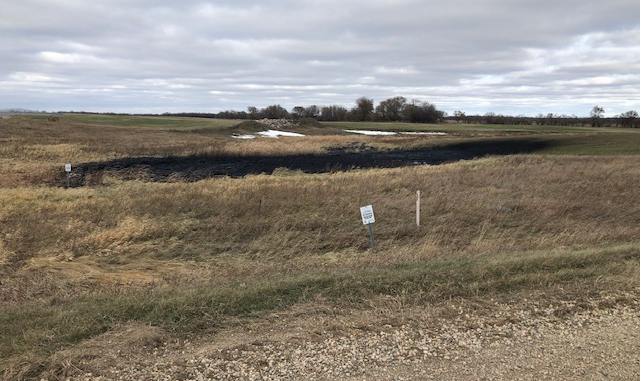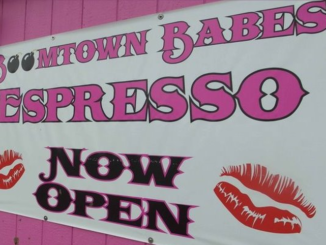
By now, you’ve undoubtedly heard about the Keystone pipeline leak in eastern North Dakota. While the leak was reported nearly three weeks ago, near the community of Edinburg and about 60 miles northwest of Grand Forks, its hit the news again today.
As you can see by the AP report, apparently the spill has:
“… turned out to have affected almost 10 times the amount of land as first reported, a state regulator said Monday.
“North Dakota environmental scientist Bill Suess said the leak reported on Oct. 29 is now estimated by state regulators to have affected about 209,100 square feet (19,426 square meters) of land near Edinburg. State regulators had said the leak affected about 22,500 square feet (2,090 square meters) of land.
“Calgary, Alberta-based TC Energy, formerly known as TransCanada, estimated its pipeline leaked an estimated 383,000 gallons (1.4 million liters) of oil. Suess said that estimate has not changed.”
The initial response by anti-oil zealots, nearly three weeks ago, wasn’t really surprising. Take, for example, Democratic presidential candidate Bernie Sanders. He promised:
“As president, I will shut down the Keystone Pipeline that should never have been built in the first place.”
But is the leak really all that big of a deal? I mean, 1.4 million liters is a lot of oil… isn’t it? Well, that is certainly a big number. Even if we convert it into gallons — 383,000 of them — it still looks significant.
But let’s consider it further. That’s roughly 9,120 barrels of oil. If you want to think of it in terms of semi’s hauling crude in the Bakken, let’s say the average load is 200 barrels — and I’m told they can haul more — that would be about 46 loads.
What I’m getting at here is that it’s simply not as big of a catastrophe as some folks are trying to make it out to be. Even with the affected land being 10 times what it was first reported, that’s still less than five acres— 4.8 to be exact. If all that crude oil was all dumped into an Olympic-sized swimming pool, it would only be 58% full.
To put this in a different perspective, with the Keystone having the capacity of handling about 550,000 barrels/day, this spill would represent roughly 0.0027% of its yearly potential.
Having said all of this, I get it that it probably isn’t a pleasant experience for the landowner affected by it in the immediate. But TC Energy promptly sprung into action with the cleanup effort. All of that affected soil will be disposed of and replaced with new. In fact, according to the aforementioned report, they’ve already recovered 88.1% of the leaked oil.
Are leaks part of the reality of having pipelines? Absolutely. There’s simply no question about it. But the idea that we shouldn’t have them at all, because of the occasional pipeline failure, is about as rational as saying we should eliminate all vehicular travel because of accidents. (By the way, 43% of first year drivers and 37% of second year drivers are involved in car crashes.)
Despite what the anti-oil folks would have you to believe — and regardless of the eye-catching headlines — when we look at the big picture, the Keystone pipeline leak in Walsh County, North Dakota simply isn’t that big of a deal.
PLEASE LIKE & SHARE!
Sources:
- https://www.nbcnews.com/news/us-news/leak-keystone-pipeline-spills-9-000-barrels-oil-north-dakota-n1074991
- https://www.pbs.org/newshour/nation/more-land-affected-by-keystone-pipeline-leak-than-originally-thought
- https://www.pbs.org/newshour/nation/keystone-oil-pipeline-leaks-383000-gallons-in-north-dakota
- https://kfgo.com/news/articles/2019/oct/31/sanders-reissues-pledge-to-shut-down-keystone-pipeline/953050/
- https://www.safetyinsurance.com/driversafety/tips_statistics.html




